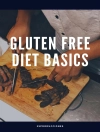Processed food addiction is a serious problem in the United States. It’s estimated that up to 70% of all processed foods are addictive, and this number is only going to continue increasing as food manufacturers become more creative with their products.
What does processed food addiction mean? Similar to any form of addiction, being addicted to processed foods means experiencing difficulties in curbing the desire to consume them, which even our brains can’t say no to. Processed foods are as addictive to humans as drugs and alcohol.
This particular addiction has serious health consequences including obesity, diabetes, heart disease, hypertension, and cancer, to name some. It also affects the quality of life in other areas such as moods or emotional well-being, as well as social relationships.
The bottom line is that processed foods can lead to critical health problems for millions of people around the world if they aren’t properly educated about what’s happening inside their bodies when consuming these products. That’s why it’s crucial to know how processed foods work on a biological level.
In this guide, you will learn how processed foods work on a biological level, what to look for in the food items themselves, and provide three actionable steps that can help you beat processed food addiction.
In this quick start guide, you will discover…
- What processed food is all about
- What processed food addiction is
- Why it’s hard to give up consuming processed foods
- How processed foods consumption affect the brain and the body
- A 3-week plan to help you beat processed food addiction
Tabla de materias
Introduction
All About Processed Food
Processed Food Addiction and How It Affects Your Brain
A Brief Introduction to Healthy Foods
Week 1 – Retrain the Brain
Week 2 – Choose Right
Week 3 – Maintain Good Eating Habits
Sample Recipes
Conclusion
References and Helpful Links












